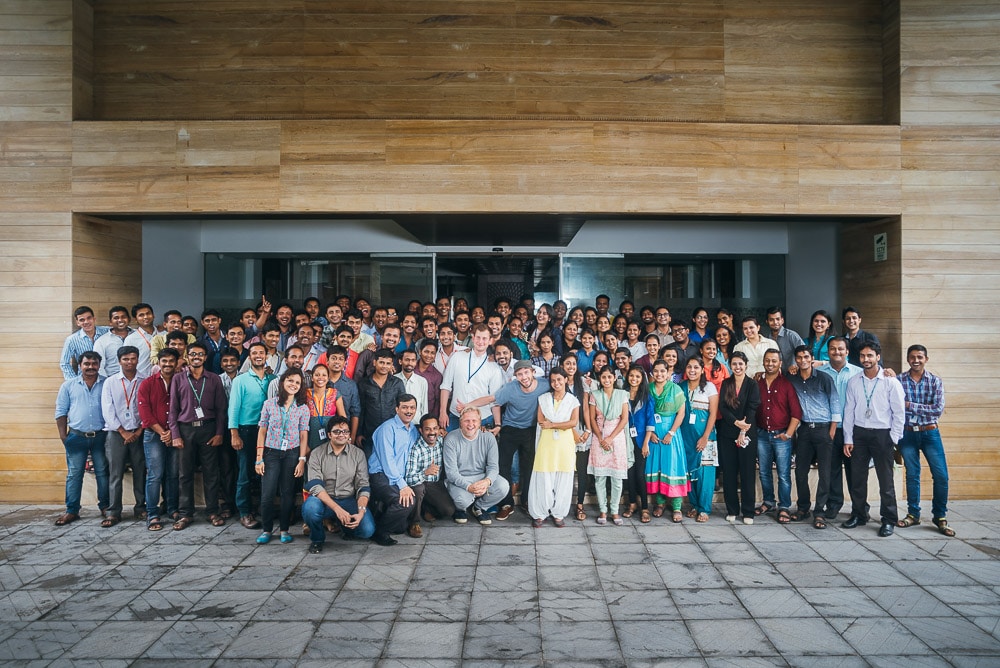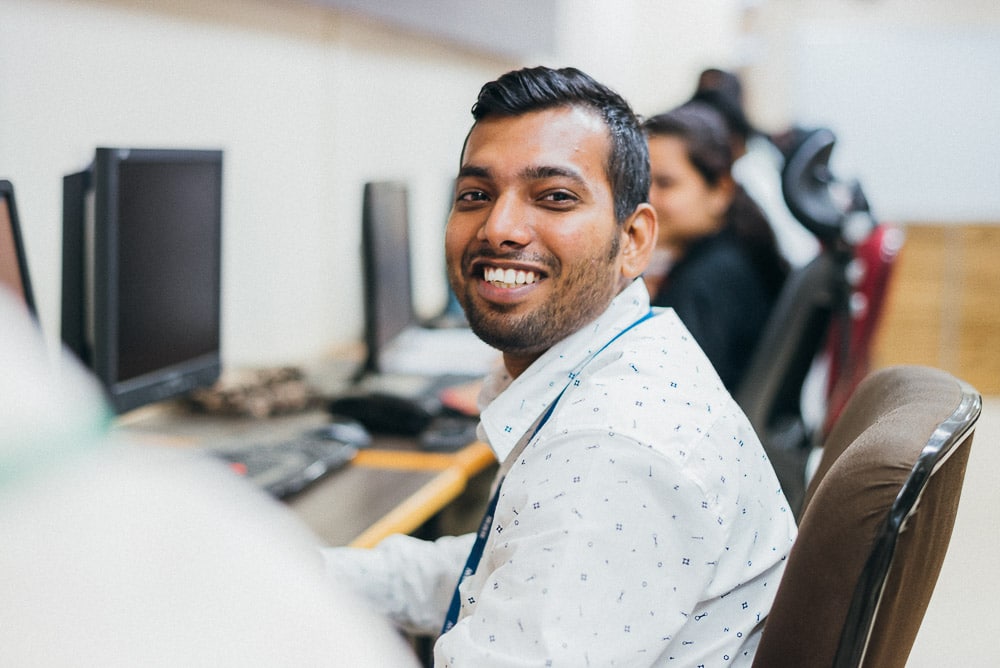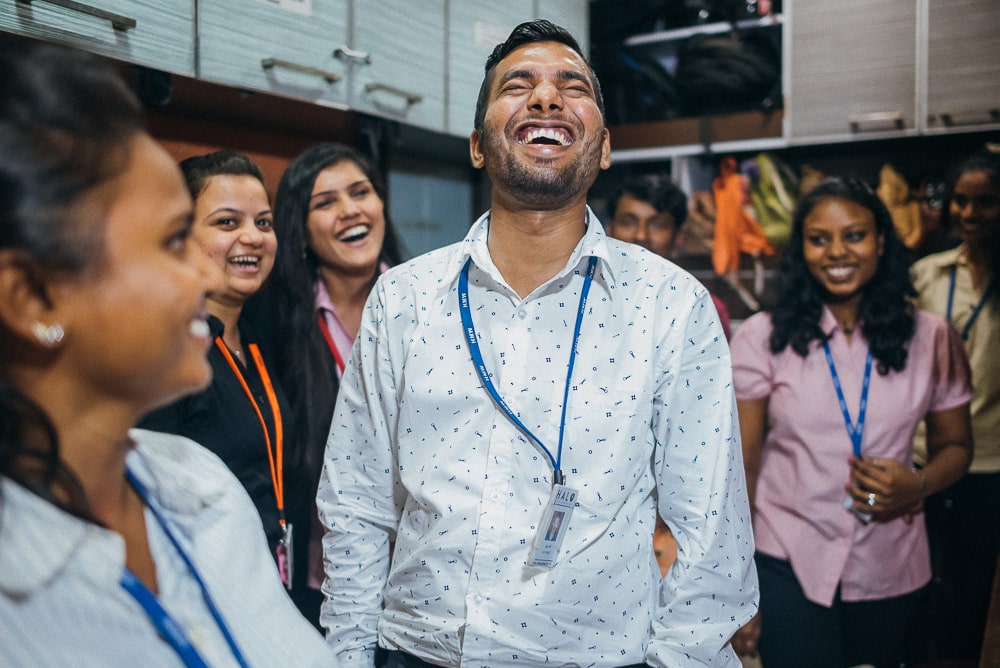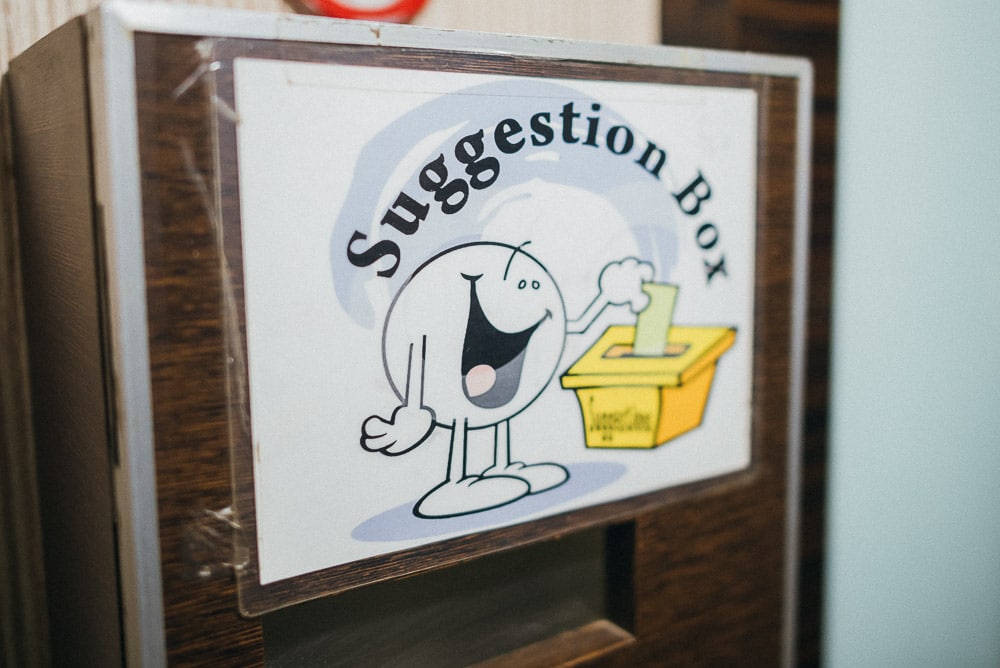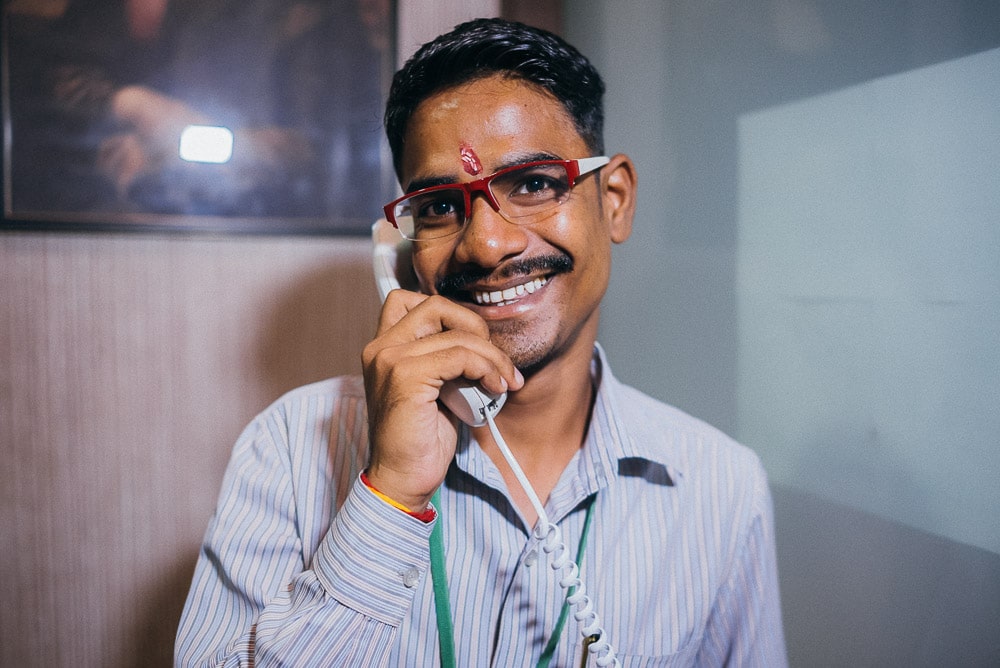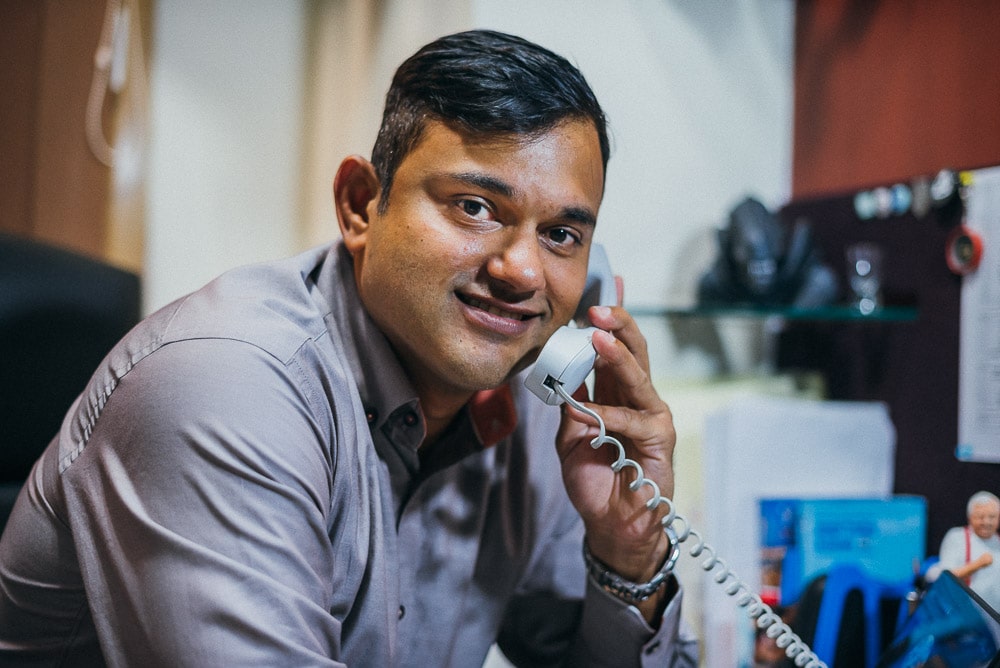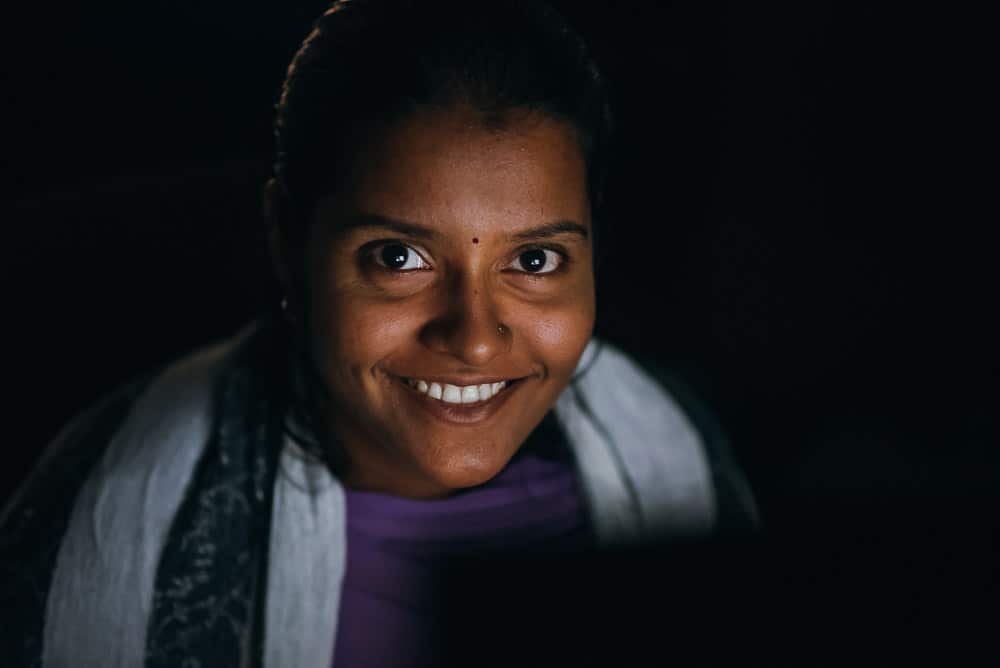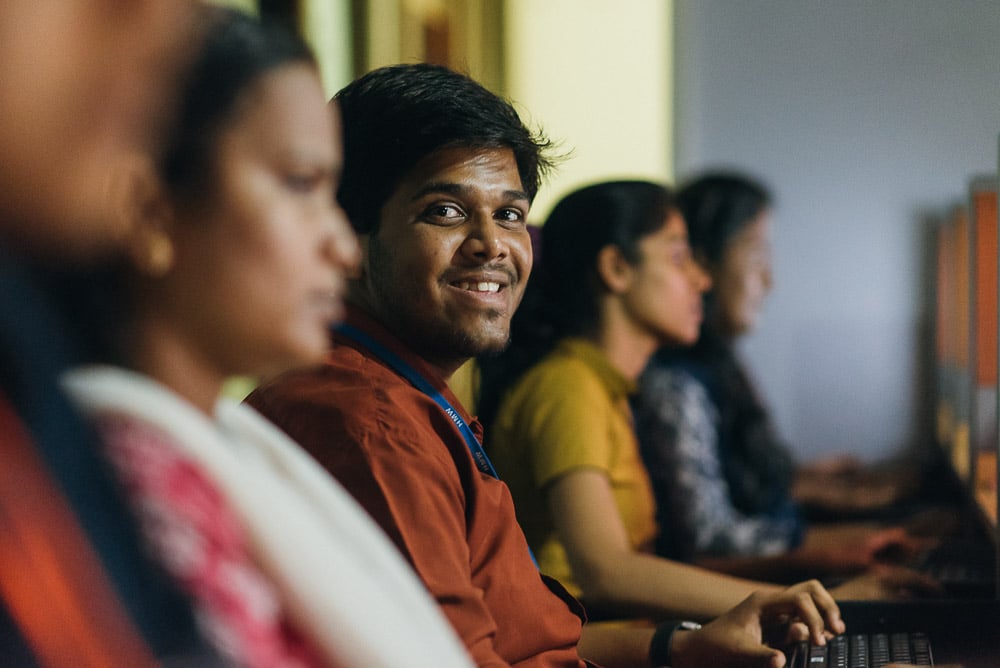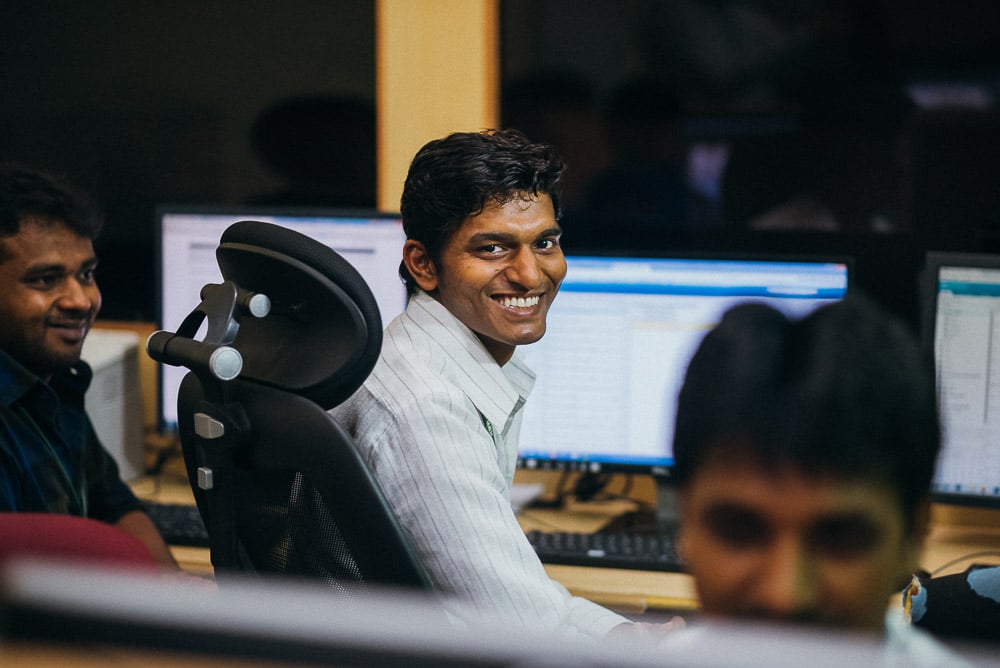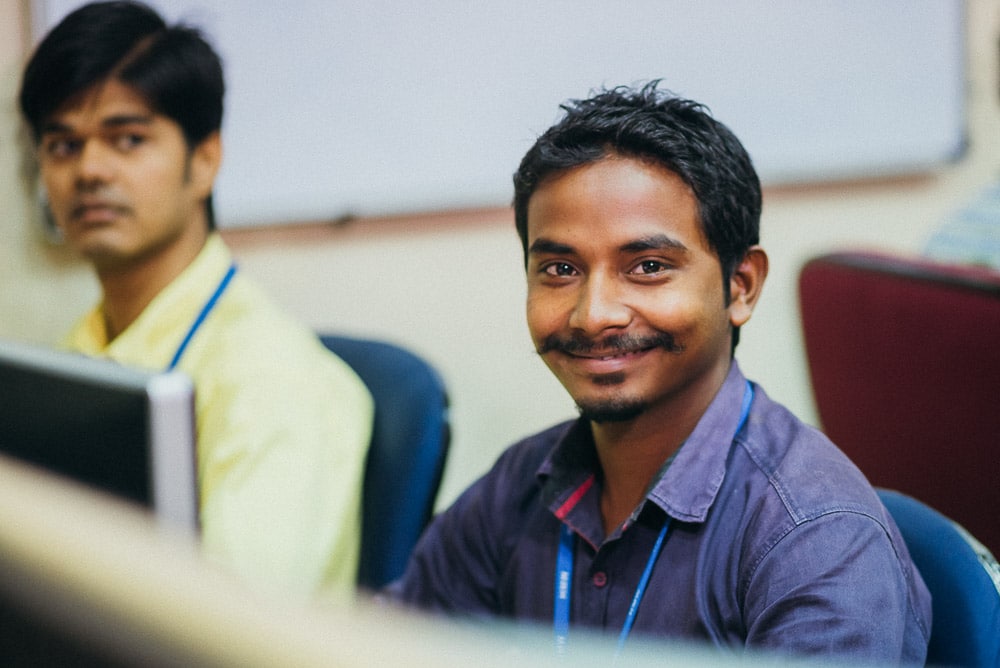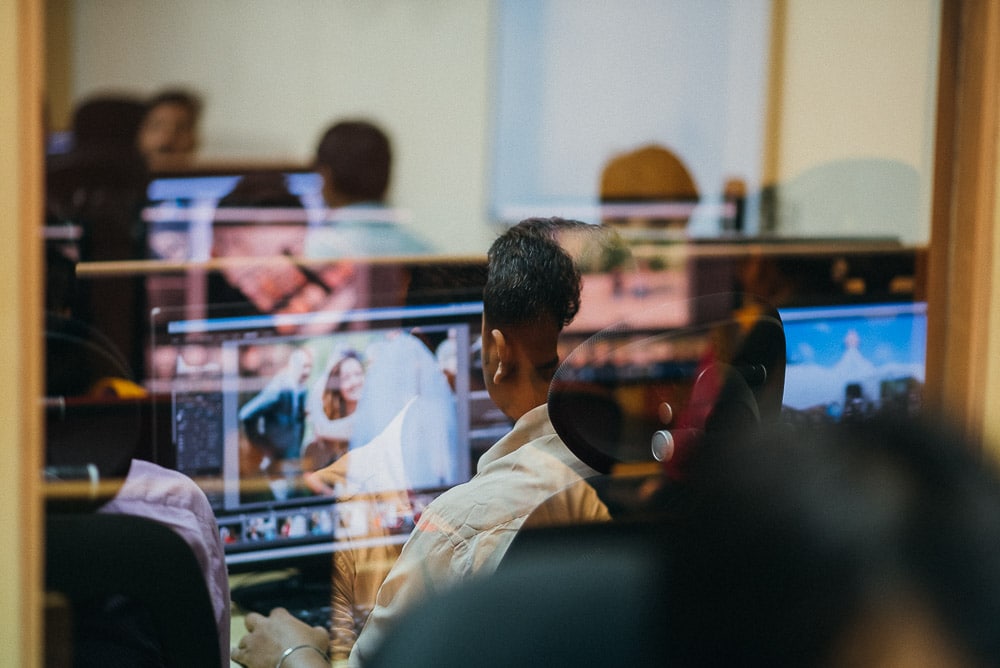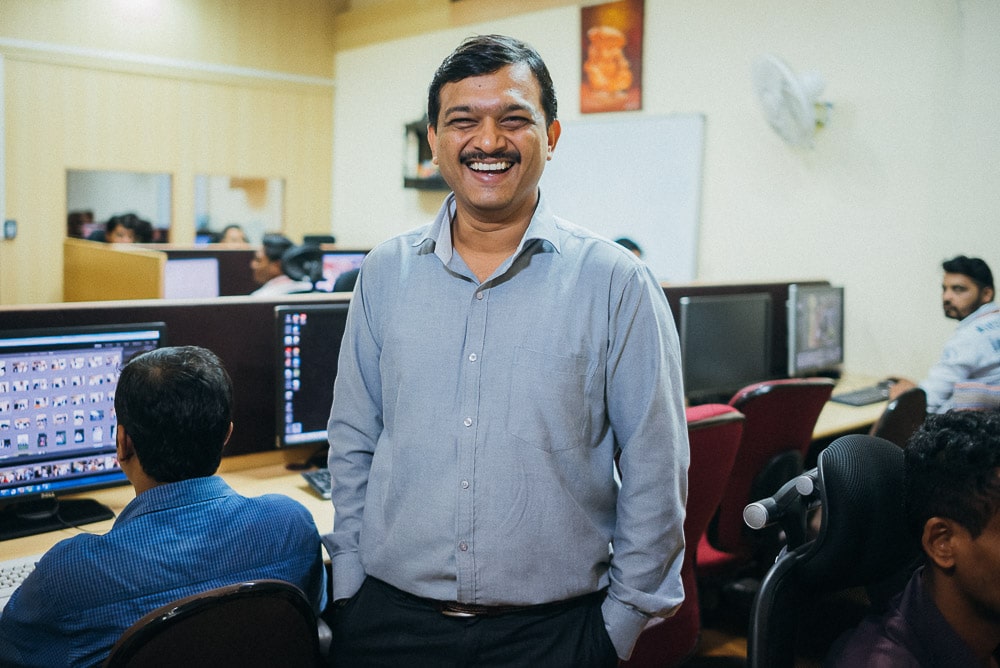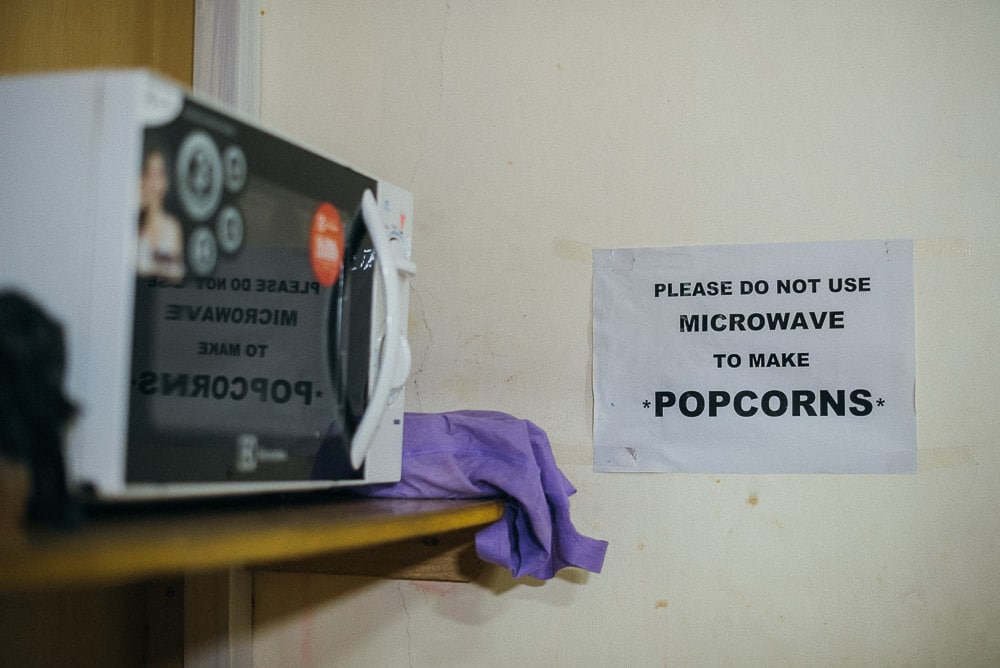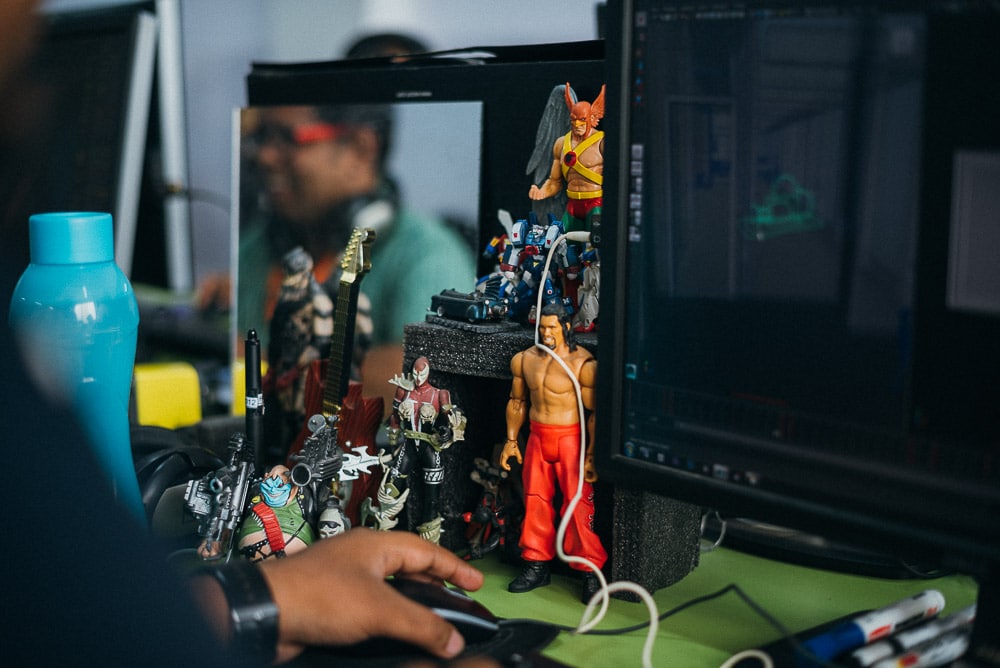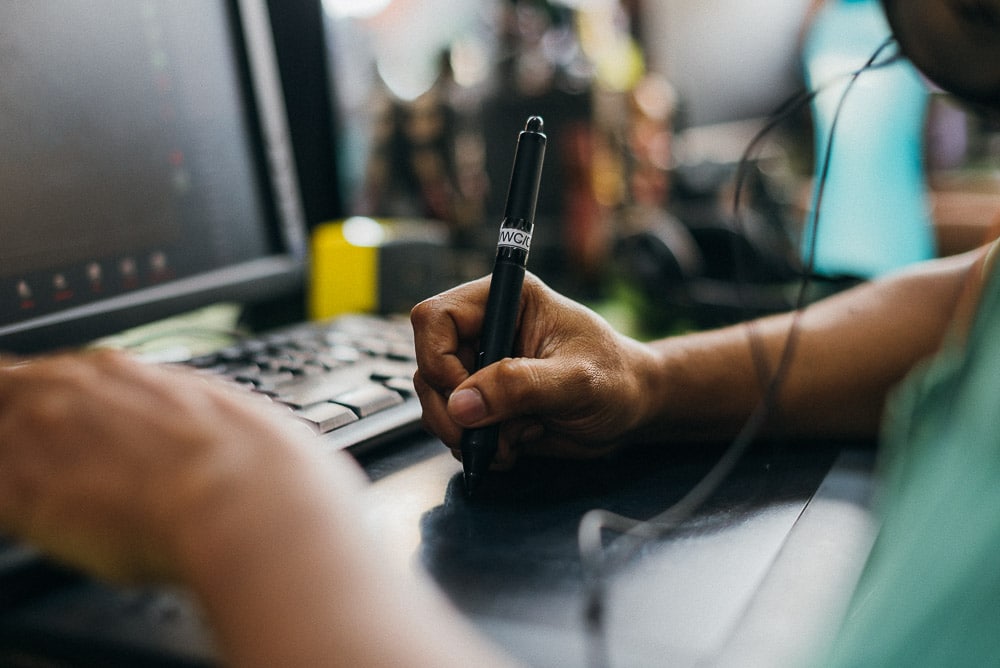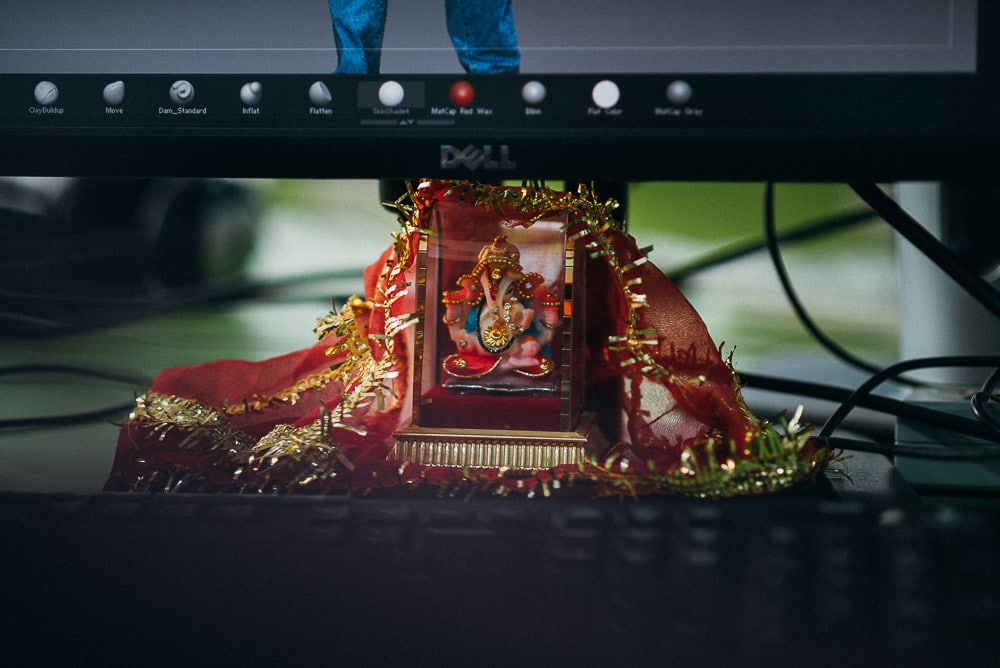Mein Besuch bei den Pro Image Editors | My visit to the Pro Image Editors
(Please read the english version below)
Oh da hatte ich ja wieder was angerichtet. Ein kleiner Hinweis auf meiner Facebook-Page, dass ich in Mumbai auch die Arbeitsbedingungen der Firma in Augenschein nehmen wollte, bei denen ich seit kurzem meine Hochzeitsreportagen bearbeiten lasse, geriet schnell zur Grundsatzdiskussion. Der Böttcher lässt seine Bilder im Ausland bearbeiten? Jehova! Doppelmoral! Echt?
Ruhig Blut! So schlimm ist das gar nicht! Im Gegenteil – sogar sehr hilfreich. Und seitdem ich meine erste Hochzeit dort bearbeiten lies, will ich nie wieder zurück. Natürlich tauchen ne Menge Fragen auf. Indien? Arbeitsbedingungen? Vertrauen? Datensicherheit? Bildhoheit? Und glaubt mir: als ich das erste mal davon hörte, ploppten bei mir die gleichen Fragezeichen auf! Also lasst uns mal kühlen Kopfes sortieren, was wir da haben:
Wer sind die Pro Image Editors?
Die PIE´s (Pro Image Editors) ist ein Unternehmen – ansässig in Mumbai/Indien, welches bereits seit 2005 Bild- und Videobearbeitungen für Fotografen und Filmemacher anbietet. Angefangen hat das ganze im Stockphoto-Sektor, mittlerweile arbeiten hier über 300 Menschen in verschiedenen Bereichen des Unternehmens: Bildbearbeitung für Hochzeitsfotografen, Baby- und Schwangerschaftsfotografie, Schul- und Kindergartenfotografie, Eventfotografie aber auch Retusche, Albendesign und Videoschnitt. Das Unternehmen möchte durch eine offene, transparente Kommunikation, hier in Deutschland neue Kunden gewinnen.
Mehr Informationen findet man auch auf der Website: http://www.proimageeditors.de
Wie habe ich davon erfahren?
Wie so oft: Von Kollegen! Als in meinem Umfeld die Anzahl derer immer größer wurde, die ihre Hochzeiten „zum Inder“ schickten, wollte ich es wissen: Geht das überhaupt? Ich meine, ich mache ja keinen Einheitsbrei… und wie ist das dort mit den Arbeitsbedingungen? Zum Inder? Haaaa! Wer sichert mir zu, dass da kein Schindluder getrieben wird? Können die das überhaupt leisten? Ich habe Angst! Über Marc Ludwig von FotoTV – der mit dem Geschäftsführer der Pro Image Editors bereits ein sehr interessantes Video geführt hat, bekam ich dann direkten Kontakt und die Möglichkeit, einen Blick hinter die Kulissen zu werfen.
Warum outsourcen?
Die Vorteile liegen auf der Hand: Ich gewinne Zeit und Qualität (wenn alles gut geht). Der Ruf der PIE´s eilte ihnen voraus: „… die bearbeiten dort wesentlich gewissenhafter und genauer, als ich es selbst je geleistet habe…“ war nur eine Bemerkung aus meinem Umfeld. „Stell dir vor, du fotografierst am Samstag eine Hochzeit, schickst Montags die Bilder weiter und der Rest erledigt sich von selbst. Du kannst am Montag bereits wieder Shootings annehmen oder den verlorenen, freien Samstag nachholen…“ Hm, klingt gut – in der Theorie…
Das Outsourcing der Bildbearbeitung hat übrigens eine lange Tradition und ist in Profi-Kreisen durchaus üblich – also ein ganz normaler Vorgang. Im Analog-Zeitalter waren Fotograf und Laborant/Bildretuscheur zwei unterschiedliche Berufe und wenn man sich die Anweisungen der Magnum Fotografen an ihre Retuscheure ansieht, wird es einem schwindelig. Heutzutage gibt es extrem gute Bildbearbeiter und Editoren, die sich auf genau diesen Teil der Fotografie konzentrieren und ganz tolle Arbeit leisten. Ich selbst lasse meine Porträts ja schon eine ganze Weile von meinem geschätzten Kollegen Josh Terlinden retuschieren und bearbeiten (was übrigens jedes mal ganz groß unter den jeweiligen Blogposts steht). Andere liebe Kollegen greifen gern auf Agenturen, wie POP zurück… Mein kommendes Logbuch New York wird übrigens von der Hamburger Agentur AlphaBeta nachbearbeitet… Wie gesagt: ein relativ üblicher Weg und mitnichten gibt der Fotograf „seine Seele“ ab, wenn er seine Bilder bearbeiten lässt. Meine Reportagen (wie die Bilder aus Indien) bearbeite ich übrigens immer noch selbst. Einzig meine Hochzeiten gebe ich raus…
Und warum dann Indien?
Wir leben in einer globalisierten Welt und treiben regen Handel mit Produkten und Dienstleistungen. Das iPhone wird in Kalifornien entwickelt und ich China zusammen geschraubt, weil es dort günstiger ist. Wir haben gelernt, die Vorteile der verschiedenen Wirtschaftsstandorte zu nutzen und tun das auch – aktiv oder passiv – jeder von uns. In dem Moment, wo du dir ein Handy (gleich welches) kaufst, akzeptierst du, das es in einem Billig-Lohnland hergestellt wurde. Und du akzeptierst, die Arbeitsbedingungen, unter denen dein geliebtes Telefon hergestellt wird. Das gleiche gilt für dein T-Shirt, deine Schuhe und deinen Tee. Wir nutzen die Technologien und Dienstleistungen anderer Länder, andere Länder nutzen unsere Technologien. Eigentlich kein großes Ding, wenn da nicht die Arbeitsbedingungen wären, mit denen wir uns zurecht nicht einverstanden geben.
Was wäre, wenn die Produkte die wir kaufen, unter solchen Bedingungen hergestellt würden, dass es den Menschen dort ein einträgliches Leben mit gutem, fairen Gehalt inkl. Krankenversicherung und bezahltem Urlaub ermöglichen. Sagen wir einfach mal: innerhalb unserer Standards? Wäre das nicht toll? Und was wäre, wenn sich andere Unternehmen am Erfolg solcher Unternehmen ein Beispiel nähmen und ihre Arbeitnehmer ebenfalls zu fairen Konditionen beschäftigen? Ich persönlich halte das für den einzig richtigen Weg, solche Länder in vernünftiges Wachstum und Wohlstand zu bringen. Import ja – aber zu fairen Konditionen!
Die PIE´s – soweit schon ma vorgegriffen – zahlen ihren Mitarbeitern Gehälter, die das 3-4 fache über dem gesetzlichen Mindestlohn liegen. Es gibt satte 21 Tage bezahlten Urlaub, ein Extra-Salär für den Abschluss einer Krankenversicherung und die Möglichkeit, das Gehalt noch mal um das 3-4 fache aufzustocken…Das ganze basiert auf einem „Trust System“ – welches der Geschäftsführer der PIE´s mir näher erläutert hat: Sein System: Glückliche und zufriedene Mitarbeiter schaffen glückliche und zufriedene Kunden. Der Geschäftsführer der PIE´s hat übrigens in New York studiert und führt das Unternehmen auch recht „amerikanisch“.
Ja, ich nutze die Vorteile, die sich daraus ergeben, dass ein anderes Lohn-Niveau in Indien herrscht, mir ist allerdings wichtig, dass die Dienstleistung, die ich dort „einkaufe“ unter fairen Konditionen und guten Arbeitsbedingungen erstellt werden. Deshalb war ich dort.
Meine erste Bildbearbeitung
Ich wollte es wissen. Und so schickte ich meine ersten 500 Bilder nach Indien und bekam sie 5 Tage später zurück. Mit einer nach vorn geschobener Unterlippe steppte ich durch die Bilder und war wirklich beeindruckt. Keine Fehler, kein Schluder – alles war exakt so, wie ich es wollte. Hammer! Wie geht das? Ich hatte denen ja noch nicht mal viele Informationen mit auf den Weg gegeben…
Kommunikation
Grundsätzlich kannst du mit den PIE´s auf deutsch kommunizieren. Ich habe die Serviceabteilung dort näher kennen gelernt und war erstaunt über das gute Deutsch, das dort gesprochen wird. Es gibt drei deutsche Kundenbetreuerinnen, die dich bei Fragen anrufen, bzw. die du bei Fragen anrufen kannst (deutsche Festnetznummer). Die drei sind ein Herz und eine Seele und sowas von nett (Siehe Interview)
Ablauf
Es führen verschiedene Wege zum Ziel. Hier ist meiner:
Ich exportiere meine Auswahl an Bildern als Lightroom Katalog inkl. der Smart-Previews (Menü->Datei->als Katalog exportieren). Die Negativdateien (also die RAW´s) brauchen die PIE´s für die Grundbearbeitung (mein bevorzugtes Modell) nicht. Den Haken kann man im Export also weglassen. Ich verschicke keine RAW´s!
Die Katalog-Datei mit den eingebetteten Smart-Previews (etwa 400 MB bei 500 Bildern) schicke ich nun via Dropbox oder ftp an die PIE´s. Die Zugangsdaten bekommt man nach einem kurzen Anmeldeprozess. Hier kann man bereits angeben, ob man einen warmen neutralen oder einen kühlen Weißabgleich bevorzugt, ob man harte Kontraste mag oder welches VSCO-PlugIn man am liebsten nutzt. Ich bügele bereits vor dem Export meine Lieblings-VSCO-Look über alle Bilder!
Bei der ersten Bestellung bei den PIE´s kümmert sich nun ein so genanntes „Research-Team“ um dich. Man legt eine Datenbank über dich an, in die alle Informationen zu deiner bevorzugten Bildbearbeitung geschrieben werden. Hierzu bemüht das Research Team deine Website, arbeitet sich durch deine Beispiel-Galerien durch und vergleicht alle Informationen mit den Bild-Daten, die du übersandt hast.
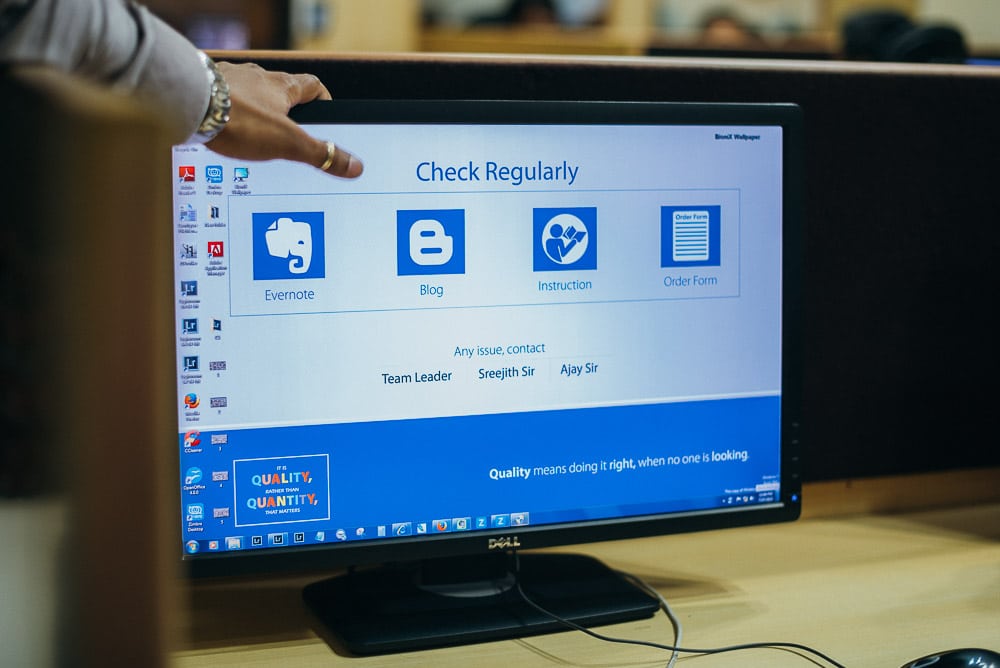
Aus all diesen Informationen wird ein Profil erstellt, auf das die Bildbearbeiter später zurückgreifen. Ich habe mir mal mein Profil zukommen lassen. Bei mir steht da z.B. unter anderem:
White Balance Preference: Cool
Contrast : High
Exposure : True to Life to High key (Please don’t go extreme)
Please use Dodging and Burning to balance the Tone and Recover Details.
Please keep an eye on Chromatic Aberration.
Please crop and straighten images by keeping Rule of Third in mind.
Please center the family Formal portraits.
Please Check for the right Camera Calibration Profile
usw.
weiterhin befinden sich eine Menge vorher/nachher Bilder in deiner Profil-Datei:
(aus dem vorher/nachher Bild könnt ihr ganz gut sehen, wie wenig, die Bearbeiter in meine Bilder „reingehen“. Der Vorwurf, die Inder zaubern mir meinen Stil in die Bilder, ist damit hoffentlich widerlegt…)
Das Research Team besteht aus 4-5 Vertrauens-Personen. Nur diese Personen, wissen wer du bist. Die eigentlichen Bildbearbeiter kennen deinen Namen nicht. Sie sehen am Ende nur einen Client-Code. Das ganze hat Sicherheitsgründe, wie mir gesagt wurde. Man will nicht, dass sich Bearbeiter beispielsweise die Bearbeitung bestimmter (bekannter) Fotografen drauf schaffen und diese Bearbeitung auf Zuruf von anderen Fotografen anwenden können. Ihr könnt also nicht einfach schreiben: „Ich möchte, dass du meine Bilder so bearbeitest, wie die vom Stilpirat…“ 🙂 das wird nicht funktionieren, weil mein Name nirgendwo sichtbar ist… Selbst wenn sie also wollten, könnten sie also mein Preset nicht auf eure Bilder anwenden…
Das Research-Team weist dir dann eine kleine Gruppe (2-3 Leute) von Bildbearbeitern zu, die dich in der Folge betreuen. Du bekommst also immer die selben Bearbeiter. Wird einer krank, fällt aus oder kündigt, wird die Bearbeitung von den anderen beiden aufgefangen…Kommunizieren tust du allerdings immer nur mit dem Kundendienst.
Die durchschnittliche Bearbeitungszeit einer Hochzeit liegt bei fünf Arbeitstagen. Du kannst die Bearbeitungszeit durch eine Zuzahlung auf drei Tage verkürzen. Die Rechner der Bildbearbeiter haben übrigens keinen Zugriff auf einen aktiven USB-Port oder das Internet. Die Daten verbleiben außerdem auf zentralen Servern und werden nicht auf den Arbeitsrechner aufgespielt. Somit wird sichergestellt, dass niemand Zugriff auf deine Daten hat.
Nachdem die Editoren mit deiner Hochzeit fertig sind, durchläuft dein Katalog noch einen Quality-Check. Hierfür gibt es wiederum eine eigene Abteilung, die jedes Foto auf „Herz und Nieren“ prüft.
Nach fünf Arbeitstagen bekommst du eine Mail, dass deine Bearbeitung fertig ist. Du kannst dir dann die Katalogdatei mit den Bearbeitungen herunterladen und in deinem Lightroom „aus anderem Katalog importieren“ klicken… fertig!
Ich persönlich checke die Fotos dann gern immer noch mal gegen, habe aber noch nie irgendeine Beanstandung gehabt. Bei mir war alles von der ersten Bearbeitung an 100% auf den Punkt. Apropos Beanstandung: Du bekommst von den PIE´s theoretisch unendlich viele Korrekturstufen. Sollten also Fotos dabei sein, wo dir dir Bearbeitung nicht gefällt, reicht ein Hinweis und es wird umgehend nachgebessert!
Mein Eindruck vor Ort:
Ich war echt beeindruckt von den Skills und der atemberaubenden Geschwindigkeit, mit der die Leute dort arbeiten. Das Arbeitsklima untereinander war kollegial, gelöst und freundschaftlich. Ich glaube, man bekommt auf Grund der Kleidung und der Grundoptik der Leute, die dort arbeiten, einen ganz guten Eindruck, zu deren Einkommensverhältnissen. Und das ist augenscheinlich (und unabhängig von den mir zur Verfügung gestellten Informationen) sehr gut! Ein iPhone 6 war dort genau so selbstverständlich, wie bei uns. Die Büros waren klimatisiert, aufgeräumt und entsprechen westlichen Standards. Jeder Mitarbeiter bekommt einen dreimonatigen Intensivkurs, bevor er richtig loslegen kann. Während dieser Ausbildung wird vor allem Farblehre, europäische Hochzeitsabläufe und Programm-Skills vermittelt. Die Mitarbeiter bekommen Festverträge mit 6-monatiger Probezeit und 3 Montage Kündigungsfrist. Der Jahresurlaub beträgt 21 Tage, wovon die Hälfte gleichzeitig zu den amerikanischen und deutschen Feiertagen zu nehmen sind. Über den Rest (etwa 10 Tage) kann frei verfügt werden. Der Verdienst liegt in etwa auf der Höhe eines Lehrers. Während der Saison ist es möglich, dieses Geholt noch mal zu verdrei- bis zu vervierfachen. Jeder Mitarbeiter kann sich übrigens seinen eigenen Bürostuhl aussuchen. Und auch die sind wirklich UpToDate! Zusätzlich zum Gehalt gibt es ein Salär zum Abschluss einer Krankenversicherung. Die PIE´s haben im letzten Jahr eine ISO 9001 Zertifizierung bekommen.
Im Gespräch mit den Mitarbeitern wurde mir glaubhaft vermittelt, dass ein Job bei den PIE´s für viele ein Jackpot ist, weil sie nach westlichen Standards behandelt und eingestellt werden.
Ich habe mit Dhanshree aus dem Service-Center ein Interview zu den Arbeitsbedingungen geführt. Schaut selbst:
Der Haken?
Hab keinen gefunden!
Du willst auch?
Kein Problem! Ich habe für jeden von euch eine Probe-Bearbeitung von 500 Fotos mitgebracht. Ihr könnt also selbst mal ausprobieren, ob das was für euch ist. Völlig kostenfrei! Die PIE´s haben mir dafür extra eine ganz tolle Landing-Page gebastelt: http://www.proimageeditors.de/stilpirat
(und bevor es gleich Diskussionen gibt: Ich bin weder auf der PIE-Payroll, noch bekomme ich Verkaufsprovisionen)
Hier noch ein paar Eindrücke von meinem Besuch vor Ort:
Oh, I have done it again; it was just a small comment on my Facebook page, that I will be visiting Mumbai to check on the working conditions of the company where I got my wedding images edited recently, which soon turned into a debate. Böttcher gets his image editing done overseas? Oh my lord! Double standards! Really?
Calm down! It is not that bad! On the contrary – it is actually very helpful. And since I sent my wedding there to be edited, I will never go back to editing again. Of course, a lot of questions arise. India? Working conditions? Trust? Data security? Image quality? And believe me when I first heard it, the same questions popped in my head to! So let’s take time and see if we can answer some of these questions, too:
Who is Pro Image Editors?
PIE (ProImageEditors) is a company – based in Mumbai, India – which offers image and video editing services for photographers and videographers since 2005. It started as an image retouching service for the stock industry and now there are more than 300 people working in various services provided by the company: image processing for wedding photographers, baby and pregnancy photography, school and kindergarten photography, event photography beside other services like retouching, album design and video editing. The company aims to gain new customers here in Germany through an open and transparent communication platform.
More information can also be found on the website:
www.proimageeditors.de – (German Website)
www.proimageeditors.eu – (English Website)
How did I come to know about them?
As it so often happens: From colleagues! As the number of people, who send their weddings „to Indians“, were growing around me I was curious to know: Is that even possible? I mean, it’s the same old story…and how are the working conditions? For Indians? Haaaa! Who can assure that there is no exploitation or labor abuse? Can they even afford it? I am afraid. I came across a very interesting video interview recorded by Marc Ludwig from FotoTV and the managing director of the Pro Image Editors. I then contacted them and got the chance to take a look behind the scenes.
Why outsource?
The advantages are obvious: I win time and quality (if all goes well). The reputation of PIE superseded my expectations: „… the process there is much more organized and more accurate than the stuff I have ever done …“ just my observation. „Imagine you are shooting a wedding on Saturday, Monday you send the images to them and the rest is done by itself. Now on Monday you can resume shooting again or make up for the lost, free Saturday…“, sounds good – in theory.
The outsourcing of editing is a long tradition and quite common for professional photographers – i.e. a completely normal process. In the analog era photographer analyst / image retouchers were two different professions and if you look at the instructions on the images produced at Magnum Photos – New York by their retouchers, it is a tizzy. These days there are extremely good image editors and retouchers that focus on a particular part of the photograph and do a really great job. I even let my colleague Josh Terlinden retouch and edit my portraits (which by the way is sometimes quite large under the respective blog posts). Other Colleagues like to use agencies like POP. My upcoming journal from New York is processed by an agency from Hamburg, Alpha Beta… As I said, it is relatively common to outsource and in no way means that the photographer sends away his soul when he chooses to do so. My reportage (like the pictures from India) I have edited myself and it is only my weddings that I outsource…
And why India?
We live in a globalized world where there is strong trade of products and services between countries. The iPhone is designed in California and assembled in China because labor is cheaper there. We have learnt to take advantage of the various business locations – active or passive – like many of us. The moment you buy yourself a cell phone (no matter which), you accept that it was made in a low-wage country and the working conditions under which your beloved phone was made. The same applies to your shirt, your shoes and even your tea. We use the technology and services of other countries to our advantage and other countries use our technology to theirs. Actually it would not have been a big deal if the working conditions in other countries were the same as ours.
What if the products we buy are manufactured under conditions that allow the people to live a profitable life with good, fair salary including health insurance and paid holidays? Let’s just say: within our standards? Won’t that be great? And what if other companies, by seeing the success of such companies, take an example and employ their workers also at a fair price? I personally think this is the only correct way to bring those countries reasonable growth and prosperity. Import yes – but at a fair price!
PIE – as anticipated before – pay their employees’ salaries, 3-4 times higher than the legal minimum wage in India. There are a whopping 21 days paid holiday, and extra salary for health insurance along with the possibility of earning 3-4 times more through performance incentives… The whole workflow is based on a „trust system“ – which the Managing director of PIE has explained to me in detail: Happy and satisfied employees create happy and satisfied customers. The managing director of PIE incidentally studied in New York and the company is also quite „American“.
Yes, I accept that there are advantages arising from the fact that wage levels in India vary from the ones that exist here, however, what important to me is that the service that I „purchase“ is created under good and fair working conditions. That’s why I was there.
My first image editing
I wanted to try it. And so I sent my first order of 500 photos to India and got them back five days later. I went through the images and was really impressed. No errors, no changes – everything was exactly the way I wanted it to be. Damn! How does it work? I have not even provided them much information along the way!!
Communication
Basically, you can communicate with PIE in German. I got to know their service department closely and was amazed by the German spoken there. There are three German relationship account managers that communicate with you (German landline). They are of one heart and soul, and that is something wonderful (see the video interview)
The Workflow
There are different paths to the goal. Here is mine:
I export my selection of images as a Lightroom catalog including Smart Previews (Menu-> File-> Export as Catalog). RAW files are not necessary for PIE’s basic editing (my preferred model).
The catalog file with embedded Smart Previews (about 400 MB with 500 images) is sent via Dropbox or FTP to PIE. You get access to the file upload functionality after a brief registration process. Here you can specify if you prefer a warm, neutral or cool white balance, whether you like hard contrasts or which VSCO plug-in one uses the most. I run my favorite VSCO through all pictures before the export!
In your first order to PIE a „research team“ is allocated to you. This team creates a database about you and searches all information about your preferred style of editing. For this purpose, the research team works its way through your site, your sample galleries and compares information with the image data, which you have sent.
From all this information, a profile is created by the image editor which is kept handy while editing your work.
White Balance Preference: Cool
Contrast: High
Exposure: True to Life to High Key (Please do not go extreme)
BACKGROUND: Dodging and burning to balance the tone and recover details.
Please keep an eye on Chromatic aberration.
Please crop and straighten images by keeping in mind Rule of Third.
Please center the family formal portraits.
Please check for the right Camera Calibration profiles, etc.
Furthermore, a lot of before / after photos are placed in your profile.
The research team consists of 4-5 people. Only these people know who you are. The actual image editor does not even know your name. They end up seeing only the client’s code. I was told this whole process is for safety reasons. They do not want that editor, dealing with a specific (known) photographer, to apply presets to other photographer’s images. So you can’t just write, „I want you to edit my pictures like Stilpirat …“ 🙂 as this will not work, because my name is not visible anywhere … So even if someone wanted to, they will not be able to apply my preset to someone else’s images.
The research team will then assign a small group (2-3 people) of image editors for you, who look after your requirements. So you always get the same editor. If anyone of them gets sick, falls out or quits, the images are edited by the other two who have a fair bit of an idea of how you like your images … you do however communicate with only the customer service as single one point of contact between you and the production team.
The average processing time of a wedding is five working days. You can shorten the processing time to 3 days by making an additional payment. Computers of the image editor intentionally do not have access to any USB ports or the Internet. The data remains on central servers and does not get loaded onto the workstation. This ensures that no one has access to your data.
Once the editor has finished your wedding, your catalog still undergoes a quality check. For this, there is again a special department, which checks each photo to its core.
After five working days you will receive an e-mail that your edits are finished. You can go online and then download the finished catalog file. In Lightroom click „Import from another catalog “ … and you are done!
I personally checked images and compared results, but I never had any complaints. First processing was 100% to the point. Speaking of my issues: If you have any complaints or just need something different, all you need to do is notify your account manager with what you need and the PIE team will implement the necessary steps to get the images rectified as soon as possible.
My views on PIE’s workplace:
I was really impressed with the skills and breathtaking speed that people are working with there. The working atmosphere was collegial and friendly. I believe one gets that good impression because of the clothing and the casual appearance of the people who work there. And that is apparently (and regardless of the information provided to me) very good! An iPhone 6 was also seen there. The offices were air conditioned, tidy and up to western standards. Each employee goes through a three-month intensive training program before they can really get started. During this training especially color correction, European wedding procedures and program skills is mediated. The employee is made permanent in the business after a 6 month probation period with a 3 month notice period. Annual leave is 21 days, half of which are to be taken at the same time as American and German public holidays. The rest (about 10 days) can be claimed freely. The salary is equivalent to that of a teacher. During the season it is possible to quadruple their salary through performance incentives. Every employee can even choose the way they want their own office chair. And that is really up-to-date! There is also a health insurance provided for the employees. Last year PIE got an ISO 9001 certification.
Speaking to the employees proved to me that working at PIE for many is a jackpot, because they are treated and adjusted to Western standards.
The catch?
I have not found any!
You want to try it out too?
No problem! I brought an offer of 500 free edits for each one of you. So you can try it for yourselves. Completely free of charge! Check out the page specially crafted for me by PIE:
http://www.proimageeditors.de/stilpirat
(And before this gets into any kind of discussion: let me tell you that I am neither on the payroll of PIE nor do I get any sales commissions from them).
A few images from my visit to the place can you find above 🙂

